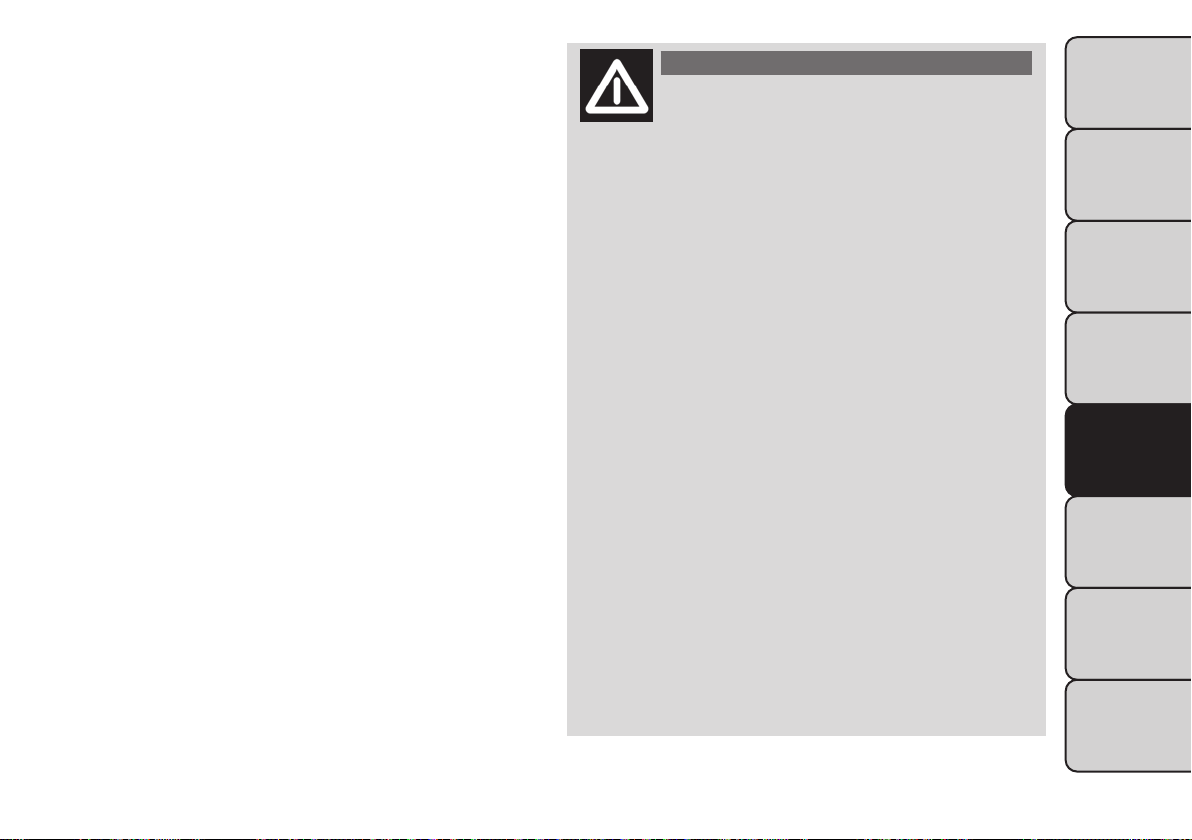Loading ...
Loading ...
Loading ...

• When the Tire Service Kit sealant is in a liquid form,
clean water, and a damp cloth will remove the mate-
rial from the vehicle or tire and wheel components.
Once the sealant dries, it can easily be peeled off and
properly discarded.
• For optimum performance, make sure the valve stem
on the wheel is free of debris before connecting the
Tire Service Kit.
• You can use the Tire Service Kit air pump to inflate
bicycle tires. The kit also comes with two needles,
located in the Accessory Storage Compartment (on
the bottom of the air pump) for inflating sport balls,
rafts, or similar inflatable items. However, use only
the Air Pump Hose (7) and make sure the Mode
Select Knob (5) is in the Air Mode when inflating
such items to avoid injecting sealant into them. The
Tire Service Kit Sealant is only intended to seal
punctures less than 6 mm diameter in the tread of
your vehicle.
• Do not lift or carry the Tire Service Kit by the hoses.
WARNING!
• Do not attempt to seal a tire on the
side
of the vehicle closest to traffic. Pull
far enough off the road to avoid the danger of
being hit when using theTire Service Kit.
• Do not use Tire Service Kit or drive the vehicle
under the following circumstances:
– If the puncture in the tire tread is approxi-
mately 6 mm or larger.
– If the tire has any sidewall damage.
– If the tire has any damage from driving with
extremely low tire pressure.
– If the tire has any damage from driving on a
flat tire.
– If the wheel has any damage.
– If you are unsure of the condition of the tire or
the wheel.
• KeepTire Ser vice Kit away from open flames or
heat source.
• A loose Tire Service Kit thrown forward in a
collision or hard stop could endanger the occu-
pants of the vehicle.Always stow theTire Service
Kit in the place provided. Failure to follow these
warnings can result in injuries that are serious or
fatal to you, your passengers, and others around
you.
(Continued)
295
KNOWING
YOUR
VEHICLE
SAFETY
STARTING
AND
DRIVING
WARNING
LIGHTS
AND
MESSAGES
IN AN
EMERGENCY
SERVICING
AND
CARE
TECHNICAL
SPECIFICATIONS
CONTENTS
Loading ...
Loading ...
Loading ...